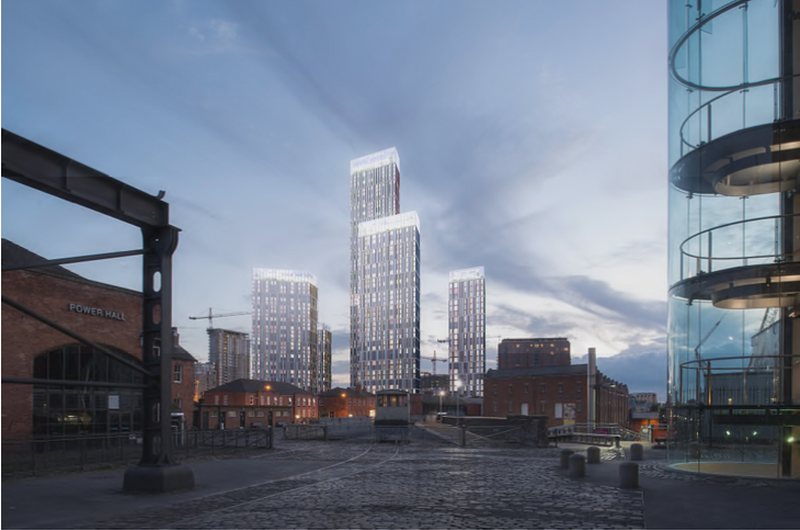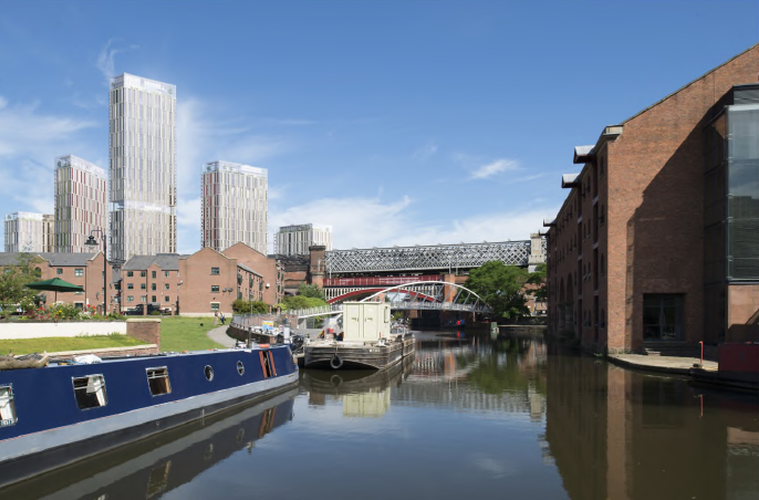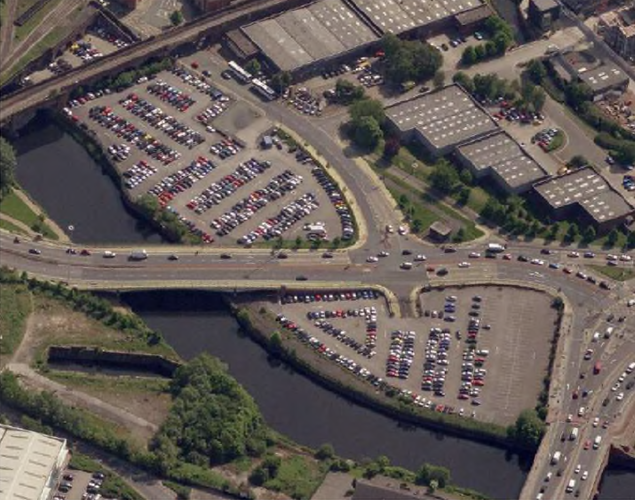The tallest Trinity Islands tower will be 213 metres high – 44 metres taller than Beetham Tower
Manchester City Council is expected to give the green light to plans to construct Manchester’s tallest skyscraper when it meets on Thursday 27 July.
At 213 metres high, the tallest of the Trinity Islands towers will surpass Manchester’s current tallest building, Beetham Tower, by 44 metres (twenty storeys).
The lofty development by Allied London - the developer behind Spinningfields, St John’s and the upcoming renovation of London Road Fire Station - will comprise five towers in total, ranging between 26 and 67 storeys, on a site just off Trinity Way on Water Street.
The Child Graddon Lewis-designed scheme will total 1390 apartments, with 53% of units offered for sale and 47% offered to the Private Rented Sector (PRS), and over 12,000 sq.m. of commercial floorspace for retail, workspace and food and drink units.
The five towers will be rhombus shaped and clad in a ‘highly reflective skin of glass’, with facades featuring coloured reveals so that the colours of the towers will ‘appear to shift and transform as you move around the building’.
At the top of each building will be a double storey ‘Winter Garden/Light Box’, offering roof terrace space and private dining areas to residents.

Allied London say their vision is to ‘create a new neighbourhood which promotes enterprise, entrepreneurism and innovation through its design, layered mix of uses and target occupiers’.
Included in plans are: a boat club on the River Irwell for Manchester University; a community art gallery; a new riverside walkway; a food market for small independent retailers; an educational facility and green park spaces.
Two lower three-storey podium buildings will also feature sports pitches, indoor and outdoor swimming pools, a gym, spa and dance studios.
It is estimated that over 3000 people will live in Trinity Islands, with construction of the towers over three years from 2019 providing more than 1000 full-time equivalent jobs.
While the ambitious development sits within the designated Castlefield Conservation Area, leading heritage body Historic England have lodged no objections to the scheme. The Georgian Group and Victorian Society, however, have, stating the scheme will impact upon historically significant buildings in the area, such as the world’s oldest surviving passenger railway station (1830) at the nearby Museum of Science and Industry.
If approved, the 67-storey high scheme will surpass Renaker’s new 201-metre high Owen Street tower, currently under construction on nearby Great Jackson Street.



















